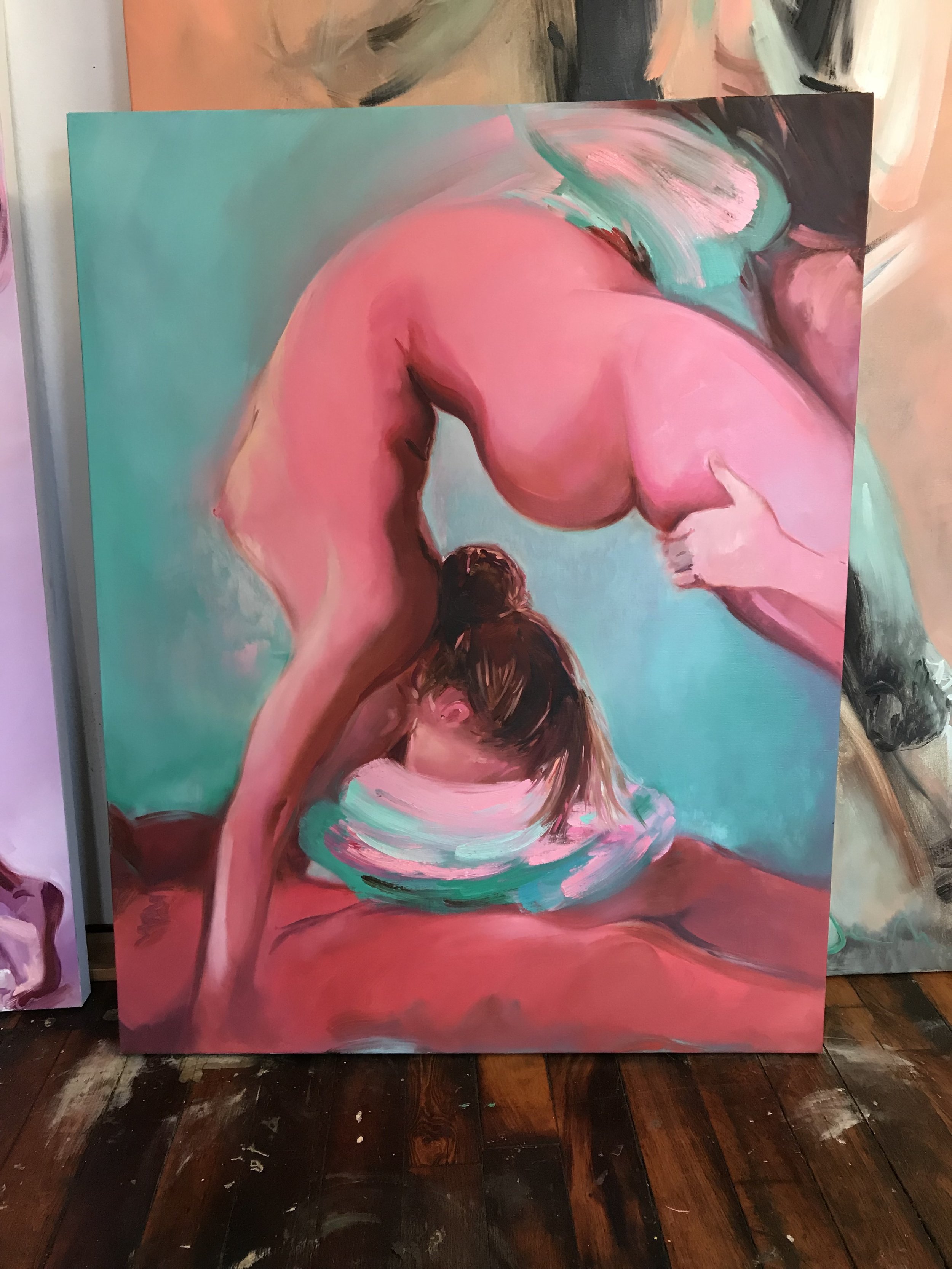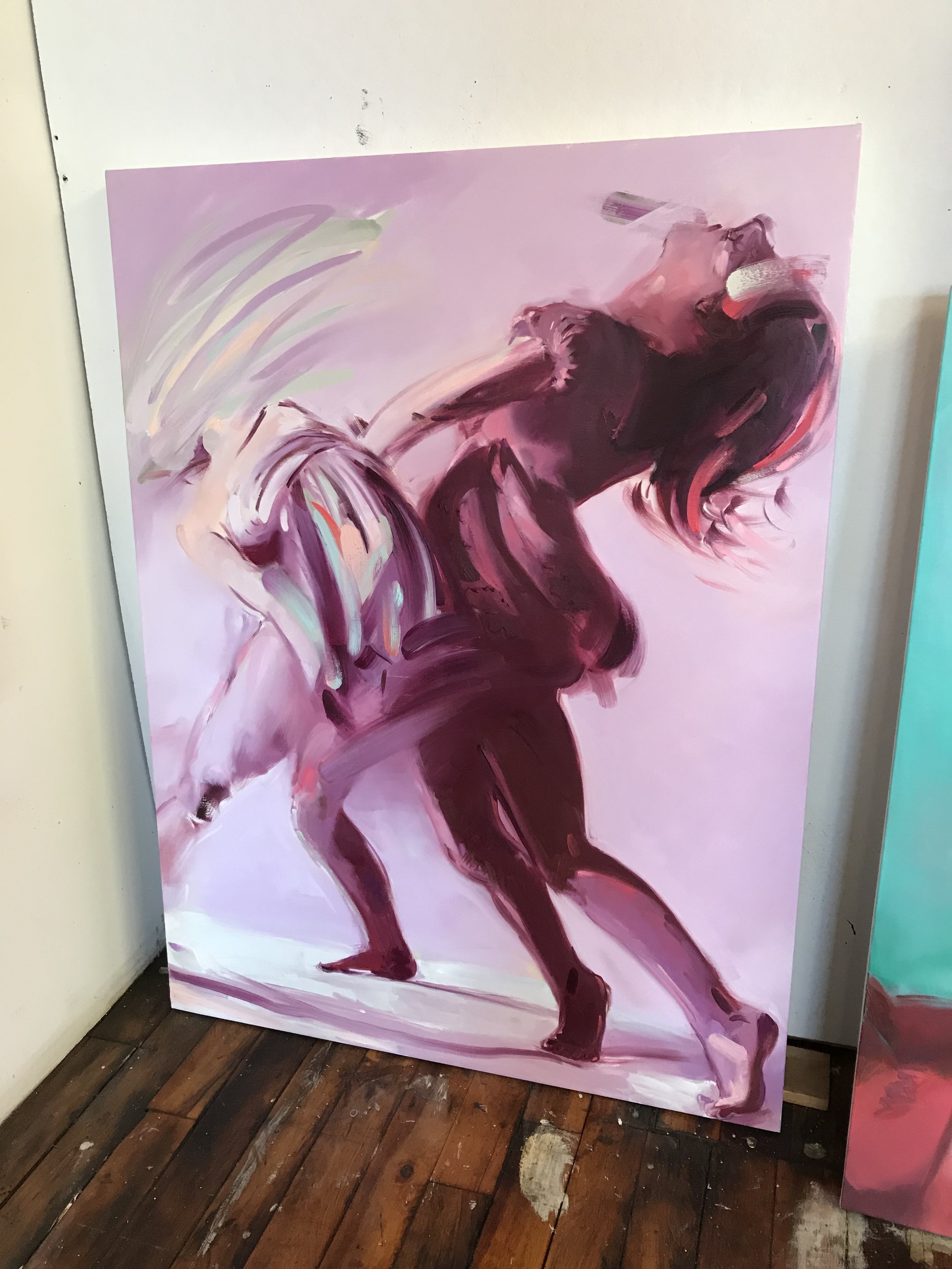Since 2016—every Women’s History Month—the National Museum of Women in the Arts has challenged those active on social media to answer this question: Can you name five women artists?
Art world statistics demonstrate that the fight for gender and race equality in the industry are far from over. Two thirds of students enrolled in art and art history programs are young women, but only one third of artists represented by U.S. galleries are women. So why is this question so hard, and how come our canon of art history is so deeply rooted in the male perspective?
#5WomenArtists is a campaign to support gender equality in the arts. Abigail Ogilvy Gallery is proud to answer #5WomenArtists this Women’s History Month with five modern and contemporary female artists, working across a range of media.
Harmony Hammond, Floorpiece VI, 1973, Courtesy of the artist, Alexander Gray Associates, and Aldrich Contemporary Art Museum.
1. Harmony Hammond
Multimedia Artist (1944 - Present)
A leader of the feminist art movement in the 1970’s, Harmony Hammond is a name known to many. Her multimedia works asserts the importance of traditionally feminine qualities, using traditionally feminine materials. In addition to being an artist, Hammond is also a scholar, curator, author, and activist.
Luchita Hurtado in Studio, Courtesy of New York Times Magazine, 2019.
2. Luchita Hurtado
Contemporary Painter (1920 - Present)
Luchita Hurtado is a Venezuelan-born artist who explores the metaphysical connection between body and nature, self and beyond. “I am part tree,” Hurtado said. “And I’m part of anything that’s on this planet.” Hurtado, Frida Kahlo’s friend and Agnes Martin’s contemporary, contributed to the progression of environmental and feminist art. She is on view at the Museum of Fine Arts in Boston, exhibiting in the Women Take the Floor exhibition, until May 3rd, 2021.
3. Howardena Pindell
Contemporary Painter and Mixed Media Artist (1943 - Present)
Howardena Pindell’s colorful works addresses the intersectionality between social and political issues in the 21st century. Critiquing racial capitalism, exploitation, and gender inequalities, Pindell employs themes of metaphorical processes of destruction and reconstruction. Cutting canvas into strips, and then restitching them into a new whole, Pindell’s process illustrates the lasting effects of war, xenophobia, and slavery, among other social issues.
Howardena Pindell, Untitled #4D, 2009. Courtesy of the artist and Garth Greenan Gallery, New York.
Martha Wilson, Name = Fate, 2009. Courtesy of the Artist and P.P.O.W. Gallery, New York.
4. Martha Wilson
Performing Artist
Martha Wilson is a photographer and performance artist, who examines the self in context. Questioning her identity, Wilson photographs herself in costume, while role-playing another persona. In taking the role of another, Wilson is able to uncover her female biases. Wilson is also the founder and director of the Franklin Furnance, a non-profit that advocates for political and avant garde work.
Hein Koh, Splendor in the Grass at Marvin Gardens, New York City, Courtesy of the Artist.
5. Hein Koh
Sculptor and Muralist
Hein Koh channels deep emotions and the inner child in her installations, walking the line between fun and introspective works. Interested in the natural duality of human emotions, Koh’s work features crying flowers, sad hamburgers, and spiked lips. Her sculptures recently outfitted the Rockefeller concourse.




